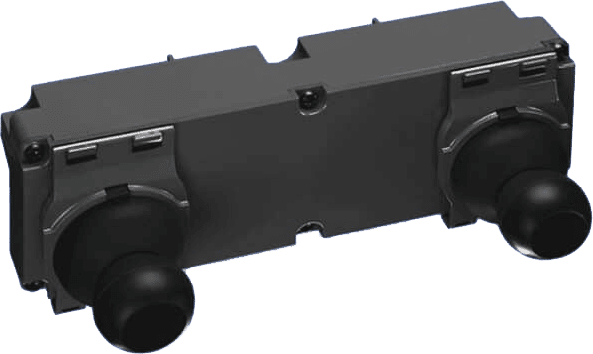How IoT-Enabled Telematics Devices Protect Assets and Improve Visibility for the Shipping Industry
By Mike Fraser
July 29, 2022
By Mike Fraser
July 29, 2022
Since the onset of the pandemic, the global shipping industry has been under the microscope. However, it’s been even more exhaustive with China’s COVID-19 countermeasures in the first half of 2022, which included lockdowns in Shanghai.
A city of 26 million, Shanghai is home to the world’s largest container port. It receives approximately 2,000 ships a day and 40 million containers per month.
While the port avoided coming to a complete halt, extreme delays wreaked havoc on the global economy. With the shipping industry’s mounting woes, it is clear why prices and wait times for everything from semiconductor chips to poultry have increased.
The image below, from MarineTraffic, provides an accurate bird’s eye view of the congestion.

While this disruption level is unprecedented, the shipping industry intermittently experiences logistics difficulties. The World Shipping Council’s member companies operate 90% of the global liner shipping capacity. They transport about 60% (more than US$4 trillion) of the global seaborne trade value. According to a World Shipping Council report, from 2008 to 2019, an average of 1,382 containers were lost at sea each year. However, from the end of 2020 to the beginning of 2021, around 3,000 containers were lost at sea in three months.
Cargo is subject to handling, inspection, and transportation methods that often go unmonitored between origin and destination. More shipping companies are turning to smart tracking and monitoring IoT telematics devices for complete asset visibility.
EyeSeal provides the shipping industry with an integrated battery-powered hardware and software monitoring solution to prevent cargo theft. The EyeSeal device, enabled by the Internet of Things (IoT), remotely monitors the logistics chain from inside the container for up to 120 days.

The asset tracking solution includes internal breach detection and environmental sensors. It establishes custody in the logistics chain via immediate and scheduled container breach alerts with a time, date and location stamp. EyeSeal works internally, which makes it more secure. Previous IoT telematics devices on the market required external antennas to function and were more susceptible to tampering and breaking.
The sensors are mounted inside the container to detect a range of variables, including:
These factors are critical for cargo containing medicines and food that must stay refrigerated at a specific temperature.
In October 2021, congestion at Los Angeles and Long Beach ports resulted in vessels waiting 18 to 24 days to dock. These vessels were collectively carrying hundreds of thousands of containers. Monitoring is essential for cargo carrying perishable items.
Real-time communication is a critical component of any IoT-enabled telematics device used in shipping. Device manufacturers need reliable and internationally compatible embedded cellular connectivity plans and services. They must also consider the upcoming sunset of 2G and 3G cellular networks. In the U.S., these shutdowns will be completed at the end of 2022, with cellular carriers switching to 4G and 5G. Devices dependent on older networks will be rendered inoperable unless they have embedded IoT modules that are 4G and 5G ready.
The World Economic Forum reports that around 90% of the world’s goods are carried by sea. Some of the largest vessels can haul up to 24,000 containers. The shipping industry is likely to face ongoing logistics challenges for the foreseeable future. Theft and product spoilage impact goods and services’ costs throughout the supply chain. IoT telematics solutions can protect against these losses.
Telit Cinterion offers the industry’s broadest portfolio of globally certified, secure IoT modules and connectivity services. They can be used as stand-alone solutions or bundled for maximum IoT success. According to a 2021 research report by Oracle, IoT connectivity is quickly becoming a bundle or feature of the IoT device. Our IoT enablement allows manufacturers to design and launch IoT devices worldwide in multiple markets and geographies with ease.
Request a consultation with our IoT experts to start developing your IoT telematics solution.